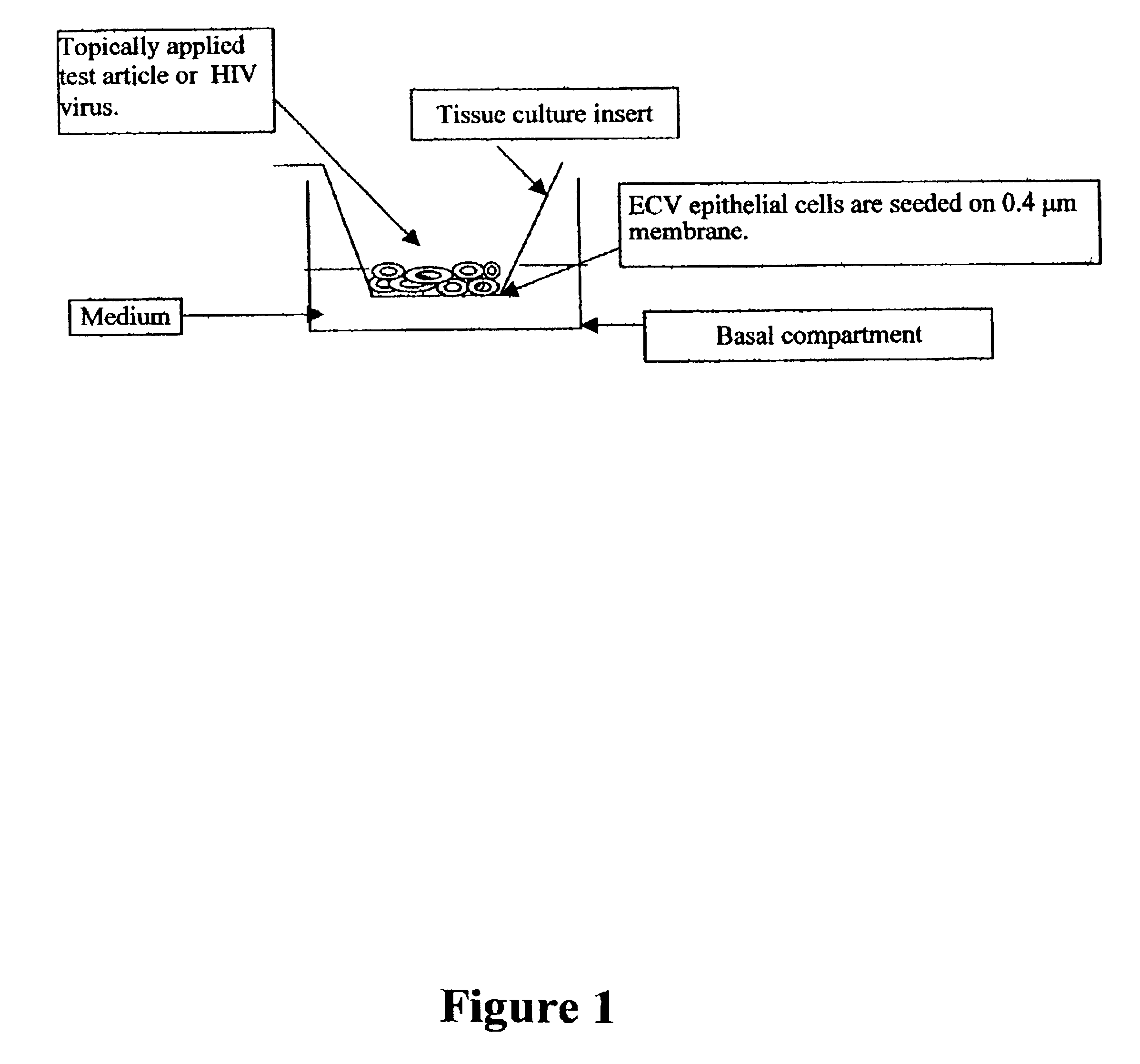Three dimensional vaginal tissue model containing immune cells
a vaginal tissue and three-dimensional technology, applied in the field of three-dimensional vaginal tissue models containing immune cells, can solve the problems of severe limitations in the use of vaginal tissue models, the lack of differentiated function and barrier properties of cells in monolayer culture, and the inability to achieve differentiation and barrier properties of normal cells, etc., to achieve the effect of increasing viability, promoting proliferation of immune cells, and increasing viability
- Summary
- Abstract
- Description
- Claims
- Application Information
AI Technical Summary
Benefits of technology
Problems solved by technology
Method used
Image
Examples
example 1
Generation and Characterization of the Cervico-Vaginal Tissue Equivalent
[0094]A source of both ecto-cervical, endo-cervico, or vaginal epithelial cells along with immune cells such as dendritic, Langerhans, or precursor cells, are necessary to produce the cervico-vaginal tissue equivalent. In this example, primary cervical epithelial cells were obtained from human ecto-cervical tissue. Langerhans cells (CD1a+ cells) were obtained by differentiating Langerhans precursor cells (CD34+ cells) using cytokines. Langerhans precursor cells were harvested from umbilical cord blood samples.
Epithelial Cells
[0095]Epithelial cells were obtained from ectocervical tissue and vaginal tissue obtained from women undergoing hysterectomies. After surgical removal of the tissue, the tissue was placed in Dulbecco's Modified Eagle's Medium (DMEM) containing 10× concentrate of penicillin streptomycin (1 mg / ml) and gentamicin (0.5 mg / ml) and stored at 4° C. until the tissue could be processed (within 24 hou...
example 2
Use of Langerhans Cells Derived from Monocytes to Generate the Cervico-Vaginal Tissue Equivalent
[0108]Langerhans cells isolated from monocytes performed equally well in the generation of the in vitro ectocervico-vaginal tissue. Experiments identical to those performed in Example 1 were performed on in vitro generated cervico-vaginal tissue equivalent which contained Langerhans cells generated from monocytes.
Generation of Langerhans Cells from Precursor Cells
[0109]Purified macrophages were negatively isolated from cord blood / adult blood derived mononuclear cells (MNC) with immuno-magnetic beads (Dynal Inc., Lake Success, N.Y.) following the manufacturer's recommendation, or by plastic adhesion. MNC (1×107) were re-suspended in 200 μl PBS supplemented with 0.1% bovine serum albumin (BSA), 20 μl of blocking reagent, and 20 μl antibody mix (monocyte-kit provided by Dynal) and incubated at 4° C. for 10 min. Cells were then washed 2× and re-suspended in PBS containing 0.1% BSA. Depletion ...
example 3
Use of Langerhans Precursor Cells
[0111]This example is identical to Example 1 except that Langerhans precursor cells were used instead of Langerhans cells. Cytokines were added to the proliferation and differentiation medium to allow maturation of the Langerhans precursor cells into Langerhans cells, in situ as the tissue developed.
[0112]2.5×105 ecto-cervical epithelial cells (EEC) suspended in PRGM and 2.5×105 Langerhans precursor cells suspended in SFEM were added to polycarbonate tissue culture treated microporous membrane cell culture inserts obtained from NalgeneNunc International (Naperville, Ill.). The cell culture inserts were maintained submerged in 1.8 ml of proliferation medium (PRGM) containing SCF (25 ng / ml), GM-CSF (200 U / ml), TNF-α (2.5 ng / ml), and FLT-3 (20 ng / ml) for 7 days in a 37° C. and 5% CO2 incubator. On day 7, the proliferation medium was removed and changed to differentiation medium, consisting of DMEM:F12 (3:1) containing retinoic acid (RA) at 5×10−9 M, ker...
PUM
| Property | Measurement | Unit |
|---|---|---|
| Time | aaaaa | aaaaa |
| Time | aaaaa | aaaaa |
| Molar density | aaaaa | aaaaa |
Abstract
Description
Claims
Application Information
 Login to View More
Login to View More - R&D
- Intellectual Property
- Life Sciences
- Materials
- Tech Scout
- Unparalleled Data Quality
- Higher Quality Content
- 60% Fewer Hallucinations
Browse by: Latest US Patents, China's latest patents, Technical Efficacy Thesaurus, Application Domain, Technology Topic, Popular Technical Reports.
© 2025 PatSnap. All rights reserved.Legal|Privacy policy|Modern Slavery Act Transparency Statement|Sitemap|About US| Contact US: help@patsnap.com


